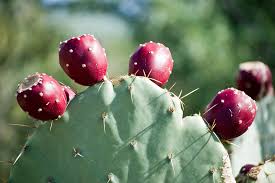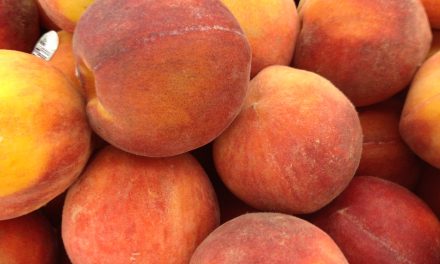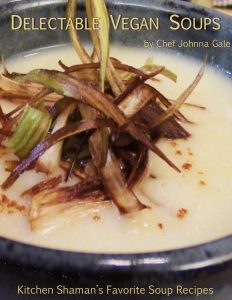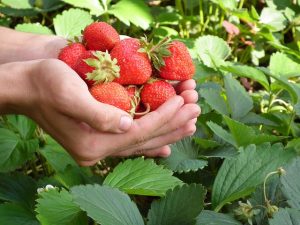 Welcome to the month of strawberries. Let it be known that in our house strawberries rule. When they are in season and on sale I purchase them and make strawberry jam, strawberry syrup (for ice cream, lemonade, and waffles), strawberry compote, strawberry ice cream, and now, strawberry salsa. There are many more things you can do with strawberries, but one of my favorite things to do is just eat them until I can’t eat anymore. It’s kind of like blueberries: stuff them in your mouth until you can’t stuff any more.
Welcome to the month of strawberries. Let it be known that in our house strawberries rule. When they are in season and on sale I purchase them and make strawberry jam, strawberry syrup (for ice cream, lemonade, and waffles), strawberry compote, strawberry ice cream, and now, strawberry salsa. There are many more things you can do with strawberries, but one of my favorite things to do is just eat them until I can’t eat anymore. It’s kind of like blueberries: stuff them in your mouth until you can’t stuff any more.
As a child, I would make macerated strawberries for my mom. This was the topping for strawberry shortcake. First I would place that store-bought and wrapped-in-cellophane sponge cake, then drizzle on the macerated strawberries that sat overnight in the refrigerator. Lastly I added Cool Whip, that mysterious substance that resembled whipped cream, but we all knew it wasn’t the real stuff. How did I know? The ingredients read like a chemistry lab experiment (which it was). Strawberry shortcake was one of my favorite summer treats. I always had a hard time in the middle of winter when I couldn’t get strawberries, or even the sponge cake. The bakeries were all too busy making pumpkin pies for Thanksgiving and Christmas to give a thought to sponge cake.
Development of Strawberries
Where does the modern, garden variety strawberry come from?
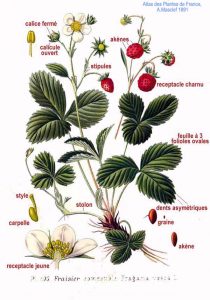 Strawberries are part of the Rosacea Family (Rose plants). Research shows that we humans have been eating strawberries for a very long time, at least since the Stone Age. Varieties have been found worldwide, hailing mainly from the northern lands of Europe and North America, all the way down to Africa, South America. In the Americas, strawberries are found mainly on the east coast.
Strawberries are part of the Rosacea Family (Rose plants). Research shows that we humans have been eating strawberries for a very long time, at least since the Stone Age. Varieties have been found worldwide, hailing mainly from the northern lands of Europe and North America, all the way down to Africa, South America. In the Americas, strawberries are found mainly on the east coast.
Reportedly strawberry plants that came from the country of Chile in South America and from the state of Virgina in the United States, traveled to France in the 1700s. There, under the care and guidance of the King’s master gardeners, they got together and made little baby strawberry plants. This was during the height of the Discovery Age, when the King of France held extensive gardens, and where his master gardeners conducted many plant breeding experiments. From there the genus Fragaria x ananassa, was developed and carried abroad. The strawberries we eat today come from this genus. There are entire books and websites dedicated to the history and breeding of strawberries. I provide links at the end of this article.
Strawberry Lore
The strawberry figures prominently in most civilizations over the last several thousand years. Out of all the fruits and vegetables I’ve read about, it seems to be one that is most well-traveled.
Strawberries stand for purity, passion and healing. During Roman times they were the symbol for beauty, love, and fertility. Strawberry motifs are found in many art forms. They appear in the illuminated manuscripts by Catholic monks and in the designs of buildings created by Masons during the medieval and renaissance periods.
It is reported that the Native Americans presented a corn meal and strawberry dish to the European settlers. This is what evolved into the strawberry shortcake that I mentioned above.
Is it a Superfood?
 I read quite a few pages on the uses of strawberries in medicine, and it is long and involved. I’m providing a few links if you want to investigate further. Let’s just say that strawberries, root to leaf, are extremely good for you. I was once told that eating strawberry leaves could make you very sick, so I was always careful not to get them mixed into the ingredients. Apparently this is not the case. You can make teas and tinctures with the leaves, as well as the berries.
I read quite a few pages on the uses of strawberries in medicine, and it is long and involved. I’m providing a few links if you want to investigate further. Let’s just say that strawberries, root to leaf, are extremely good for you. I was once told that eating strawberry leaves could make you very sick, so I was always careful not to get them mixed into the ingredients. Apparently this is not the case. You can make teas and tinctures with the leaves, as well as the berries.
Strawberries have been used in a variety of medicinal practices. The fruit is well-known as an anti-inflammatory and can help in the aid of digestion. It has a list of vital nutrients and chemicals that help the body. It has been studied and noted that it can help bring down blood sugar spikes in diabetes. It is also showing useful in reducing cardiovascular diseases.
Please note that I am not a qualified physician, herbalist, or any other kind of medical practitioner. What I am reporting is what I have learned and researched, and wish to pass on to you, the reader. And yes, strawberries can be considered a superfood.
Any way you like your strawberries, make sure that you check the container for any signs of spoilage when you buy them. Strawberries last only so long, so use them as soon as you get them. Have fun making your own concoctions, let us know what you come up with. I would love to share your dishes on our Facebook page – and if you get an awesome photo of you cooking with strawberries, we can share it on Instagram or Google +.
Helpful Links
Medicinal uses of strawberries

